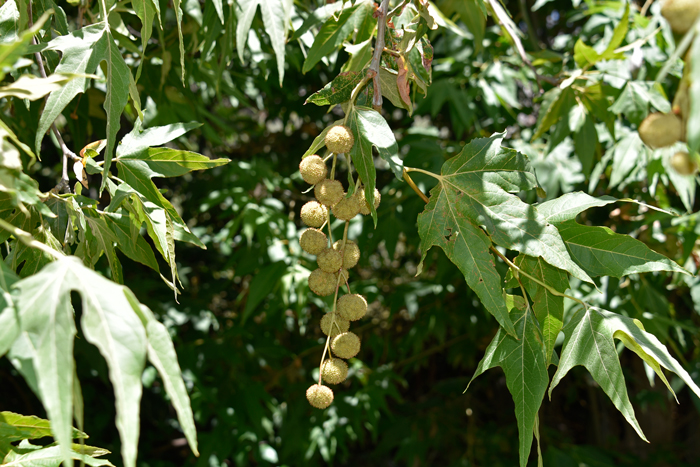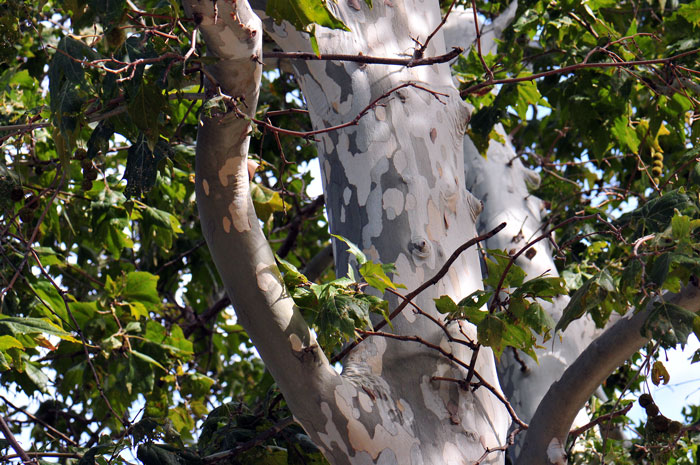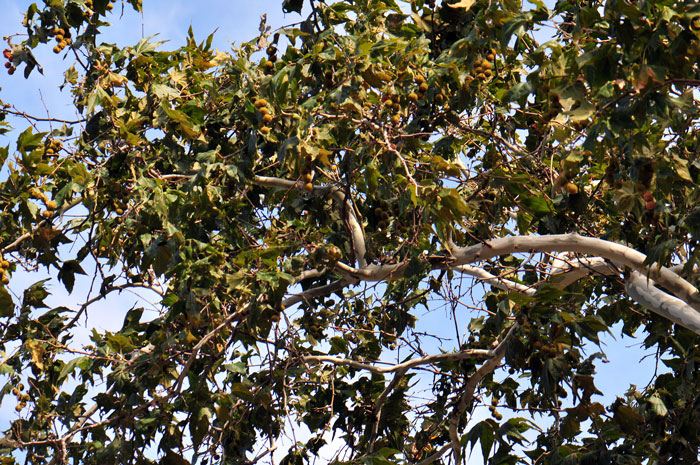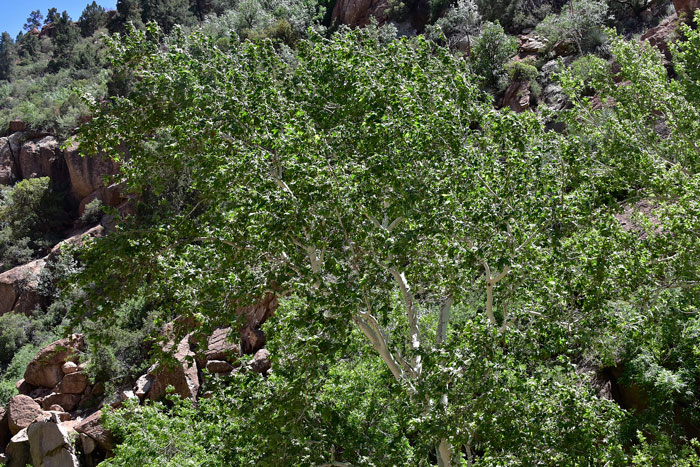Platanus wrightii, Arizona Sycamore Tree




Scientific Name: Platanus wrightii
Common Name: Arizona Sycamore
Also Called: (Spanish: Aliso, Sicomoro, Álamo)
Family: Platanaceae, Plane-tree Family
Synonyms: (Platanus racemosa subsp. wrightii, Platanus racemosa var. wiightii, Platanus racemosa var. wrightii)
Status: Native
Duration: Perennial.
Size: Up to 75 feet tall, more or less.
Growth Form: Forb/herb; trunks erect or often reclining especially in riparian canyons, mottled bard, white branches, outer bark flaking off exposing smooth white inner bark.
Leaves: Green, stipules present, palmate, deeply lobed, margins entire or minutely serrate.
Flower Color: Green, flowers inconspicuous, emerging with the leaves, male and female flowers in dense, globose unisexual heads, either solitary or in racemes; fruit a 4-sided achene with a basal tuft of long hairs in late fall.
Flowering Season: April to May.
Elevation: 2,000 to 6,000 feet.
Habitat Preferences: Riparian rivers and canyons below 6,000 feet.
Recorded Range: Arizona Sycamore is relatively rare in the United States where it occurs primarily in Arizona with populations in New Mexico. They area also native to parts of northwestern Mexico in Sonora, Chihuahua and Sinaloa. In Arizona it is found throughout most of the state below 6,000 feet.
North America & US County Distribution Map for Platanus wrightii.
U.S. Weed Information: No information available.
Invasive/Noxious Weed Information: No information available.
Wetland Indicator: In North America Platanus wrightii has the following wetland designations:
Top Level Regions: Lower 48 States, FACW; North America, FACW;
North America: Arid West, FACW; Western Mountains, Valleys, and Coast, FACW.
FACW = Facultative Wetland, usually occur in wetlands, but may occur in non-wetlands.
Threatened/Endangered Information: No information available.
Genus Information: 1 genus in Platanaceae in North America with 5 species. Worldwide, The Plant List includes 9 accepted species names in Platanus.
Comments: Arizona Sycamore is common in southwestern United States deserts where it is found along streams commonly with Arizona Walnut (Juglans major), Fremont Cottonwood (Populus fremontii) and Goodding's Willow, Salix gooddingii).
The Arizona Sycamore is common throughout its range and very similar to the California Sycamore, Platanus racemosa which at one time was thought to be a sub-species thereof. The Mogollon Rim is the approximate northern limit of this species in Arizona. This and other native Sycamore trees are vitally important for erosion control in their riparian habitats. Arizona Sycamore trees provide excellent habitat for breeding desert birds including woodpeckers that nest in the hollow cavities of mature trees. Raccoons also take advantage of old mature trees with hollowed out cavities for resting, hiding and raising young.
The type (Platanus racemosa var. wrightii) from near the San Pedro River.

